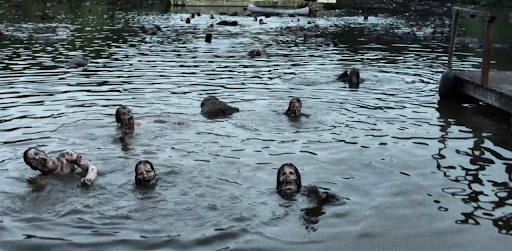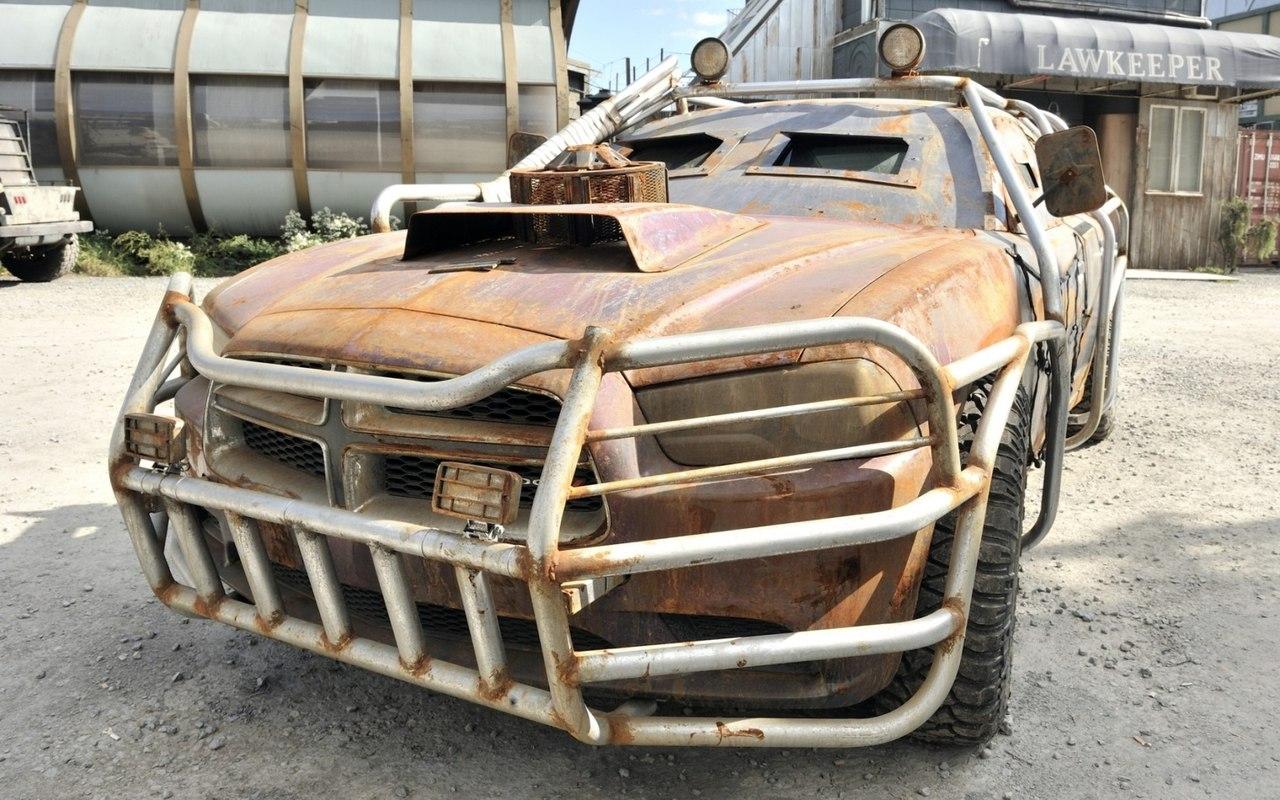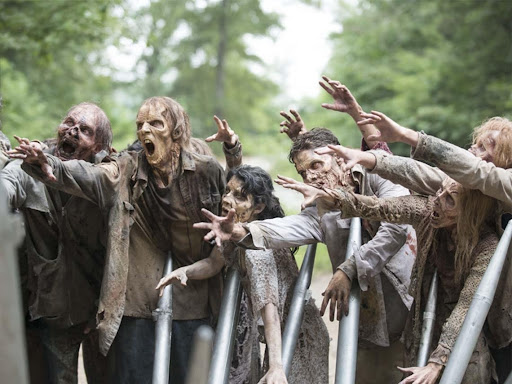When considering the question can zombies swim? Zombies, often depicted as reanimated corpses, suffer from the effects of decomposition. Their muscles deteriorate, leading to reduced coordination and strength. This physical degradation extends to their bones, which become brittle and prone to fractures.
In essence, the concept of zombies effectively swimming is improbable due to their compromised physical condition and cognitive limitations. Therefore, zombies are unlikely to be capable swimmers.
Moreover, the absence of higher cognitive functions limits their ability to perform intricate tasks, let alone the complex movements required for swimming.
The physical limitations of zombies
Let’s delve deeper into the extensive physical limitations that hinder zombies from engaging in swimming activities. In their fictional portrayal, Zombies are characterized by bodies in various states of decay and decomposition. This deterioration has far-reaching consequences for their mobility and overall functionality.
The degradation of muscles, tendons, and ligaments leads to a significant loss of strength and coordination. As these crucial components of the musculoskeletal system break down, the ability to perform intricate movements like swimming becomes increasingly improbable.
Moreover, the structural integrity of a zombie’s bones deteriorates over time, rendering them fragile and susceptible to fractures. This fragility extends to the spine and limbs, essential for generating the necessary motions required for swimming. Water’s buoyancy places unique demands on the skeletal system, requiring it to support and propel the body.
The brittle nature of the zombie’s bones and the lack of muscular control impede any meaningful interaction with water. Beyond the physical aspect, zombies’ lack of higher cognitive functions further compounds their aquatic limitations. Swimming is a skill that demands a level of conscious coordination, balance, and understanding of fluid dynamics. Zombies, however, lack the cognitive capacity to learn or adapt to such complex activities.
Their actions are governed by primal instincts rather than cognitive decision-making processes, making the precise movements of swimming unattainable. In popular culture, zombies are depicted with seemingly superhuman endurance and capabilities. However, a closer examination of their physiological state reveals a starkly contrasting reality.
While these fictional portrayals may suspend disbelief for entertainment, the degradation of a zombie’s body points toward a resounding conclusion: swimming is an intricate activity that demands physical prowess, coordination, and cognitive awareness that zombies inherently lack. Thus, the physical limitations imposed by their decaying bodies make the prospect of zombies swimming an implausible scenario.
The myth of waterborne zombies
Waterborne zombies have captured many’s imagination, fueled by pop culture and urban legends. However, upon closer examination, this concept reveals itself as more fiction than fact. The idea of zombies emerging from watery depths stems from the allure of the unknown and the eerie nature of submerged environments.
Yet, when considering the practicalities of such a scenario, numerous factors come into play that challenge its plausibility. One of the primary issues with waterborne zombies is the significant physical obstacles they would face. As discussed earlier, zombies are burdened by various physical limitations, including decayed muscles and brittle bones.
These limitations hinder their capacity to engage in basic terrestrial movements, let alone navigate aquatic environments. The intricacies of swimming require precise coordination of limbs, a skill that deteriorated muscles and fragile bones would need help.
Furthermore, the lack of buoyancy in zombies’ decomposed bodies presents a significant obstacle. Living humans possess a certain level of buoyancy due to their composition of air-filled lungs and the distribution of body fat. In contrast, the decomposed tissues of zombies are denser and less likely to provide the necessary buoyant force for effective swimming.
This absence of buoyancy makes the idea of waterborne zombies even more implausible.
From a biological perspective, the need for energy is paramount. As portrayed in various media, zombies exhibit an insatiable hunger for human flesh. This raises the question of whether their bodies could even generate the energy required for sustained movement in the water.
Swimming is a physically demanding activity, necessitating constant energy expenditure, which the decayed bodies of zombies may struggle to provide.
While the notion of waterborne zombies adds an element of intrigue to horror narratives, it ultimately rests on a foundation of scientific improbability. The physical limitations, lack of buoyancy, and energy requirements all doubt the feasibility of zombies navigating water environments. As with many aspects of the zombie mythos, the allure lies in its fantastical nature rather than its alignment with the laws of physics and biology.

Understanding human vs. zombie physiology
Comparing human and zombie physiology provides insight into the fundamental differences that dictate their capabilities and limitations. Humans and zombies represent two drastically distinct states of being, shaped by the contrasting forces of life and decay.
Human physiology is a marvel of complex systems working in harmony. Muscles and bones collaborate to create coordinated movements, allowing humans to perform tasks ranging from intricate fine motor skills to mighty athletic feats. The cardiovascular system ensures the delivery of oxygen and nutrients, while the nervous system orchestrates the intricate dance of sensation and response.
Additionally, human brains facilitate cognitive functions, enabling problem-solving, decision-making, and adaptive learning. All of these elements culminate in a harmonious symphony of life.
In stark contrast, zombie physiology is characterized by deterioration and decay. The muscular system of a zombie loses its strength and functionality over time due to decomposition.
This process is further exacerbated by the absence of ongoing physiological maintenance mechanisms that sustain living organisms. Bones become brittle, unable to support weight or movement effectively. The cardiovascular system, responsible for oxygenating tissues and removing waste, ceases to function, resulting in a lack of circulation and energy supply.
The most critical divergence lies in cognitive function. Human brains are hubs of complex activity, enabling a wide range of cognitive processes from memory and learning to creativity and emotion. In contrast, zombies lack conscious awareness and decision-making capabilities. Their actions are driven by primal instincts related to the pursuit of sustenance rather than by conscious thought.
When considering swimming, these physiological disparities become even more apparent. The intricate coordination, strength, and cognitive understanding required for effective swimming are all products of human physiology. The decay and deterioration inherent in zombie physiology are significant barriers to such activities.
In summary, human and zombie physiology represent two ends of a spectrum, one embodying life’s vitality and the other displaying the consequences of death and decay. Understanding these physiological differences provides a clear rationale for why the concept of zombies engaging in activities like swimming remains firmly in the realm of fiction. The very nature of their bodies and cognitive capacities renders such actions implausible, reinforcing the separation between the living and the undead.
Examining zombie movement patterns
Examining zombie movement patterns sheds light on the unique ways in which these undead creatures navigate their surroundings. The portrayal of zombies in popular culture often highlights their distinctive, slow, and seemingly relentless movement. This deliberate portrayal stems from a combination of factors related to their physiological limitations, sensory perception, and instinctual behavior.
Zombies’ characteristic slow movement can be attributed to the degradation of their musculoskeletal system. As their muscles deteriorate, their ability to generate swift and coordinated movements diminishes significantly. This results in a shuffling gait, with each step requiring more effort due to the weakened state of their muscles. This slow pace reflects their physical decay and adds to the tension and suspense associated with zombie narratives.
Furthermore, the impaired cognitive function of zombies plays a pivotal role in their movement patterns. Their limited ability to perceive their environment leads to a need for more navigation. Zombies tend to move in a straight line, with little to no awareness of obstacles. This contributes to their movement’s eerie and predictable nature, as they mindlessly follow the nearest stimuli, often human presence or sound.
Interestingly, despite their sluggishness, zombies persist remarkably in pursuing living prey. This persistence is rooted in their instinctual drive for sustenance, which supersedes other cognitive processes. Their single-minded focus on finding and consuming human flesh fuels their movement patterns, even if those patterns lack the complexity and adaptability of living creatures.
Zombie movement patterns reveals a convergence of physiological limitations and primal instincts. Their slow, lumbering gait and lack of awareness result from their decaying bodies and impaired cognitive faculties. This distinctive movement style has become a defining characteristic of zombies in popular culture, shaping our expectations and experiences in horror and suspense.

Factors affecting zombie behavior in water
Several factors come into play when considering how zombies might behave in water, adding complexity to the already enigmatic nature of these creatures. While zombies are commonly associated with slow, shuffling movements on land, their behavior in aquatic environments introduces new dynamics shaped by their physical limitations and the properties of the water itself.
- Buoyancy and Decomposition: Water’s buoyant force can have contrasting effects on zombies. Their deteriorated bodies might become less dense due to gas buildup during decomposition, potentially increasing their buoyancy. However, the state of decay might also make their bodies porous and waterlogged, counteracting the buoyant effect. This creates uncertainty in predicting whether zombies would float or sink in water.
- Movement Impediments: Water’s drag and resistance can exacerbate zombies’ movement limitations. Their weakened muscles and brittle bones, already struggling on land, would face even more significant challenges in water. This could result in more erratic and sluggish movement, making effective swimming even more unlikely.
- Sensory Impairment: Zombies’ impaired cognitive and sensory functions extend to their aquatic behavior. Their limited ability to perceive their environment would be further compromised in water, potentially leading to increased confusion and difficulty targeting potential victims.
- Predator-Prey Dynamics: Waterborne environments introduce an array of new dangers for zombies. Aquatic creatures could view zombies as potential prey, leading to potential conflicts. Moreover, the sensory cues emitted by zombies might attract predators or scavengers, impacting their ability to navigate water safely.
- Energy and Sustenance: Energy requirements for movement are higher in water due to resistance. Zombies, reliant on limited energy stores from their decaying bodies, might find it even harder to sustain any activity in water. This raises questions about their ability to exert themselves and pursue prey in aquatic environments.
- Decomposition Acceleration: Water could accelerate the decomposition process due to increased microbial activity and exposure to moisture. This might result in faster physical deterioration, compounding their existing limitations and further reducing their capacity for movement.
- Environmental Factors: The nature of the aquatic environment matters. Calm freshwater bodies present different challenges than turbulent oceans. Temperature, salinity, and other water properties could all influence zombies’ behavior and survivability in different ways.
The factors affecting zombie behavior in water are multifaceted and interconnected. The unique challenges of aquatic environments exacerbate the already substantial limitations posed by their decaying bodies. As such, while waterborne zombies hold a certain allure in fiction, a critical examination of these factors suggests that their ability to navigate water is highly implausible.
Can we hide in water from zombies?
Hiding in water from zombies might seem like a plausible escape strategy, but several important factors should be considered before relying on this approach. Water can provide some advantages, but it could be a better solution due to the complex interplay between zombies’ behavior and the challenges posed by aquatic environments.
- Visibility and Sensory Perception: Zombies often have impaired cognitive and sensory functions. Their ability to detect and track prey could be further compromised in water. However, this advantage depends on factors such as water clarity, the movement of the water, and the level of noise generated. Zombies might still detect movement or noise if the water is murky or has significant disturbances.
- Buoyancy and Movement Limitations: While water might slow down zombies’ movement to some extent due to increased resistance, their ability to float or walk along the bottom depends on their level of decomposition. If gases produced during decomposition increase buoyancy, zombies could rise to the surface. On the other hand, if their bodies are waterlogged, they might sink or struggle to move effectively.
- Escape Routes and Shorelines: The effectiveness of hiding in water depends on available escape routes. If you’re near a body of water with multiple access points, zombies might be able to surround the area, limiting your options. Additionally, shallow water near shorelines might allow zombies to reach you, negating the advantage of being in the water.
- Exposure and Vulnerability: Being in the water for extended periods can expose you to other risks, such as hypothermia or fatigue. Additionally, while submerged, you’re less able to defend yourself and are vulnerable to other aquatic dangers, ranging from marine animals to underwater obstacles.
- Predator-Prey Dynamics: Depending on the location, bodies of water might contain wildlife that could also threaten humans. These predators could be attracted by zombies or other factors, potentially leading to new challenges.
- Zombie Persistence: Zombies are often depicted as relentless in their pursuit of prey. While hiding in water might buy you some time, it’s unlikely to deter zombies long-term. They might eventually drift away, but their lack of higher cognitive functions means they could linger in the vicinity for extended periods.
While hiding in water from zombies could provide a temporary advantage, it’s not a foolproof solution due to the variables involved. Assessing the water’s depth, visibility, shorelines, and potential aquatic dangers is crucial. Ultimately, survival strategies should be multifaceted and adaptable, considering the situation and surroundings.
Can we kill zombies in water?
Killing zombies in water introduces new challenges compared to dispatching them on land. Water can affect the effectiveness of specific methods and weapons, and the dynamics of aquatic environments can complicate the task. Here are some considerations when attempting to eliminate zombies in water:
- Weapon Effectiveness: Traditional melee weapons like knives and bludgeons might be less effective in water due to the increased resistance and buoyancy. The force needed to penetrate a zombie’s decomposed body could be hindered by the water’s drag. Firearms might also be less reliable due to the potential for water to interfere with mechanisms and ammunition.
- Decomposition Acceleration: Water’s moisture and microbial activity could further accelerate decomposition, potentially weakening zombie bodies. This might make specific methods of dispatching zombies more effective, but it could also lead to a faster spread of waterborne diseases.
- Mobility and Access: Your mobility in water and the zombies’ movement capabilities will influence your ability to engage them effectively. Zombies might be slower in water, but their movements could still be unpredictable. Additionally, maneuvering yourself while fighting in water can be challenging.
- Risk of Infection: Waterborne environments can carry risks, such as exposure to contaminants, pollutants, and pathogens. Engaging zombies in water might expose you to diseases that could be transmitted through the water.
- Aquatic Creatures: Bodies of water often harbor various marine creatures that the presence of zombies or commotion in the water could attract. These creatures might become additional threats, complicating the situation.
- Noise and Attraction: Engaging zombies in water could generate noise and disturbances that might attract more zombies from nearby areas. The noise could also attract attention from other survivors or groups.
- Resource Management: Engaging in combat, even in water, requires careful resource management. Weapons, ammunition, and energy could be scarce resources in a post-apocalyptic scenario, and using them in water might further limit their availability.
Killing zombies in water is a complex endeavor that requires consideration of factors such as weapon effectiveness, the environment, mobility, and the potential risks involved. It’s essential to approach such situations cautiously and have a well-thought-out plan that accounts for aquatic environments’ unique challenges.

How to live on a ship to avoid zombies
Living on a ship presents a compelling strategy for evading zombies and securing survival in a post-apocalyptic world. Individuals and groups can establish a self-sufficient haven by choosing a sturdy vessel equipped with essential supplies and fortified against intrusion.
Ships offer the advantage of mobility, allowing escape from danger and access to resources in various locations. Rigorous security measures, including barricades and regular patrols, would be essential to keep zombies at bay. Stockpiling weaponry, ensuring navigation skills, and sustainable energy sources are vital components of this survival approach.
Assembling a capable crew with diverse skills, such as navigation, medical expertise, and engineering, is crucial for ship operation and self-defense. Communication systems would maintain connections with allies and monitor developments in a changing world. While challenges like rough seas, equipment maintenance, and potential conflicts loom, the versatility and resilience of a ship-based sanctuary provide a viable means of withstanding the challenges of a zombie-infested world.
Conclusion
In contemplating whether zombies can swim, a nuanced understanding emerges that bridges the realms of science and fiction. While popular culture often portrays zombies with a certain degree of adaptability and superhuman abilities, a closer examination of their physiological limitations suggests otherwise.
The deterioration of muscles, brittle bones, and lack of cognitive awareness all point to zombies’ implausibility in navigating water effectively. Swimming demands coordinated movement, buoyancy control, and mental understanding—qualities that deteriorated bodies and impaired minds are unlikely to possess.
Thus, the notion of zombies swimming remains primarily a product of creative fiction rather than a reflection of the biological realities that define their existence.




